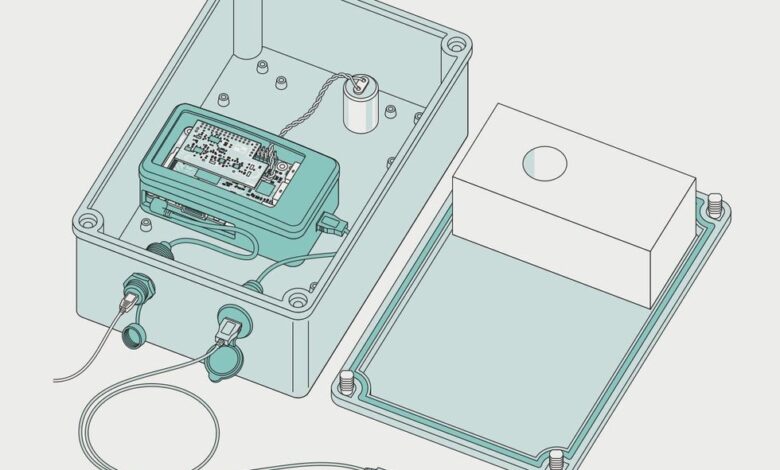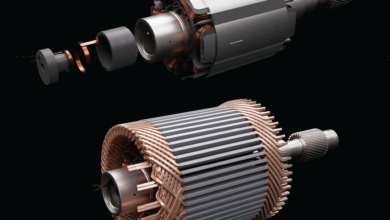Detect Quakes With “Raspberry Shakes”

I have only once felt an earthquake—in 1985, when a magnitude-4 temblor occurred just north of New York City. It wasn’t until I heard the news reports later that I realized the vibration that had awakened me at 6 a.m. was, in fact, a small earthquake.
Many earthquakes have since vibrated the ground beneath my feet. It’s just that those vibrations, having traveled long distances through the Earth, have (thankfully) been too small to feel. If I had a suitably sensitive seismometer, though, I’d be able to measure them.
I recently decided that I needed to give this a try. Searching the interwebs, I found no shortage of leads about how to build a DIY seismometer. Fundamentally, these consist of a magnet attached to a mass, with a nearby pickup coil. The mass is suspended so that it remains largely motionless when the ground shakes. The shaking does vibrate the coil, however, inducing a voltage in it due to its relative motion through the magnet’s magnetic field. The problem is that the DIY seismometer designs I was seeing were large and ungainly contraptions. I wondered whether I could build a more compact one using a geophone.
Geophones are commonly used in the oil and gas industry for seismic surveying, where the seismic waves are artificially generated to probe the ground below. On land, special trucks—called “thumpers” —do the job. The seismic waves they produce reflect back up from layers of rock and are sensed using geophones.
A search of eBay showed that geophones could be had inexpensively. The rub, I soon realized, is that geophones aren’t designed to pick up the low frequencies found in teleseismic waves from distant earthquakes. These range from about one cycle per second (1 hertz) down to a fraction of a cycle per second. Most geophones are designed for measuring frequencies above 10 Hz. The lowest-frequency models generally available are for 4.5 Hz.
Further investigation, though, revealed that some clever electronic signal conditioning could extend the range of a geophone to lower frequencies. I was all set to pursue this strategy when I discovered that somebody had beat me to it. Actually, a whole community of (mostly) amateur seismologists had, using a Raspberry Pi–based device called a Raspberry Shake, developed in 2016 by a group in tectonically active Panama. The Raspberry Shake effort has grown to include users worldwide who share seismic data. Even some professional seismologists use Raspberry Shakes because they are inexpensive as seismometers go.
The required electronics consist of a geophone [top left], a signal-conditioning and A/D board [top middle], a Wi-Fi dongle [top right], and a Raspberry Pi Model 3B+ [bottom]. James Provost
The Raspberry Shake folks offer a variety of configurations. I purchased the most bare-bones package for about US $175. This consists of a geophone and a sensor board that plugs into a Raspberry Pi. I used a Raspberry Pi Model 3B+.
I housed the unit in a waterproof enclosure, in which I had installed one bulkhead connector for 5-volt power and a second one for USB, so I could plug in a Wi-Fi dongle that was physically separated from the Raspberry Pi. (The Raspberry Shake people advised not using the Model 3B+’s built-in Wi-Fi, which apparently causes data glitches.)
Setting up my Raspberry Shake, like most Raspberry Pi projects, involved a few magic incantations to the Linux gods. In this case, there were really just two challenges. The first was to get an SD card prepared with the operating system and the Raspberry Shake software. For me the primary approach described in the installation documentation flopped, but the alternative system offered worked just fine.
The second challenge was getting a Wi-Fi dongle set up. The first one I purchased, said to be suitable for Linux, proved a bust. But an older dongle I had on hand worked. Wary of Wi-Fi issues, I first tested my Raspberry Shake in my living room, wired directly to my router. The Raspberry Shake is designed to be used in a so-called headless configuration, which eliminates the need for a display: You can connect to it remotely using SSH or via a nifty Web interface. So in no time I was able to see data the Raspberry Shake was recording.
Letting it record the shaking caused by people walking around my house revealed mysterious data gaps. Investigating the cause, I discovered that the problem was the power adapter I was using, which couldn’t deliver enough current. Once I replaced it, the data outages disappeared.
At this point, I installed the unit on the cement-slab floor of my home’s detached garage, figuring that this location would be free of signals caused by anyone walking around the house. Then I left it to gather data until an earthquake was reported somewhere in the world sufficiently large to possibly be detectable.
On 29 August, there was a magnitude-5.5 earthquake in, fittingly, Panama, birthplace of the Raspberry Shake. I consulted a Web page that shows a seismic station near my home in North Carolina. This revealed that faint signals from this earthquake had reached my area.
The Raspberry Shake’s Web interface makes it easy to view recorded data, presented in what seismologists call helicorder format. This portion of the data for 6 September 2023 includes the time at which teleseismic waves from a moderate-size earthquake in Chile would have reached the recording site, at about 23:59 UTC, which is shown at the 14-minute mark in the green trace [bottom]. No obvious earthquake signal is seen at that point, though.James Provost
When I looked at the data recorded by my Raspberry Shake, though, it showed no matching signal. I was disappointed but not particularly surprised: Magnitude 5.5 is a pretty wimpy earthquake, after all, and it took place almost 3,000 kilometers away.
I investigated what some other Web-connected Raspberry Shakes had recorded during that earthquake. The farthest one from Panama that registered a good signal was in Puerto Rico. The seismic waves from the Panama earthquake were apparently too small to register on Raspberry Shakes in the continental United States.
Since that time, a larger (magnitude 6.2) quake took place in Chile. The earthquake-magnitude scale is logarithmic, so this was five times the size of the magnitude-5.5 Panama quake. But it was much farther (about 7,400 km) away. And my Raspberry Shake didn’t register waves from it either.
So I’m still waiting for a big one. And I’m thankful that, from my East Coast location, I’ll only be seeing it as signals on my garage seismometer, rather than as a bunch of rubble in the street.
IEEE Spectrum




